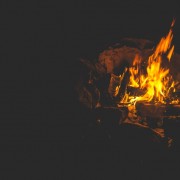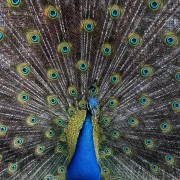Boys and Their Toys
My most frequent companion in high school was an automobile, a 1965 Mustang. Not one of the hot ones, only a six cylinder. Aside from the hours of sleep, and those spent trying to stay awake in class, I spent more time in that car than anywhere else. Pacing the length of Ocean Boulevard from end to end, looking for something, or someone, to relieve my hunger for new experience.
My stomach always felt empty. I was on the hunt, easily distracted by any chewable possibility. The Mustang had bucket seats which made new experiences with girls difficult. My mother’s Buick LaSabre was more of a mobile bedroom, but Mama’s Buick, unlike the Mustang, did not enhance my chances of being mistaken for a cooler. sharper tool than I was.
I had wanted a V-8 convertible, dual exhaust with glass-pak mufflers, like Earl Taylor had. The Duke of Earl. His Mustang sounded like two-hundred and eighty-nine horses running barefooted on a hard clay road. I wanted my car to sound like that.
I had one glass pak muffler put on. One glass pak being all a six cyl-inder engine allowed. One glass pak, not two, never sounded like barefooted horses on a hard clay road—only buzzed and popped. Down at the poolroom, Craig Hazelton gave me the ignoble nickname “Glass-pak.”
I tried other stuff to make the car look swift; I put on racing stripes down the sides, jacked up the front end, took the hubcaps off. I transformed a brand new automobile into what the used car dealers refer to as a “sled,” a car that looked like it would end up sitting on cinder blocks in a couple of years.
Some people had cars that were perfect for them. Timmy Taylor owned a Rambler that he named, “Blue,” not “Old Blue,” just “Blue,” because the car was. When the car overheated, Timmy sometimes poured cold lemonade into the radiator instead of water, for extra refreshment. He painted racing stripes on Blue for irony. Thirty miles an hour, maybe thirty-five was maximum speed.
Blue was a convertible. Almost nothing separated the passengers from the road—the holes in the floorboards were outhouse ready, you could use the bathroom without rolling a window down.
Dennis Harrelson owned a black, long-bodied Chevrolet, with a hood scoop and silver mag wheels. Dennis’s nickname derived from, and sounded like, the way the car did: “D.H. a-Go-go-go Bomb.” The nickname was not quite ridiculous, nor was the car quite a hot rod automobile. It had a limousine flare, like Dennis, whose volatile personality camouflaged financial intelligence as time would tell. Dennis was aggressive, like the car looked in profile, subject to explode loudly without doing a great deal of damage. He had a pretty girlfriend from the Air Force Base who would ride with him after school, sitting so close, they looked like a two-headed sideshow under the steering wheel.
Rock Smith drove a World War II jeep. I don’t think it had any sort of a top to put up when it rained. Rock drove to school always with a small dog perched in the backseat. The dog would sit there all day, waiting for Rock to come out and drive around some more. It was such a one-way, one-man dog, you couldn’t help but try to distract it, or bribe it to quit the vigil and have some fun. Brown and white spotted, if I remember, a Jack Russell Terrier, maybe. It probably had teeth like a chainsaw. All day, it never moved, silent as a Cold Stream Guard at White Hall Palace in London, refusing to acknowledge anyone’s existence, until Rock relieved it of duty’s or habit’s solitude.









